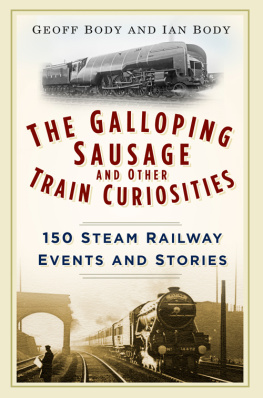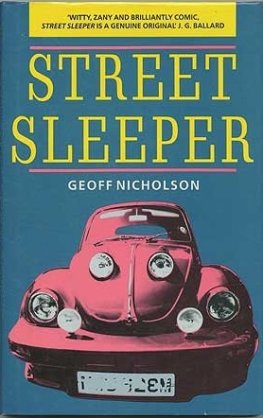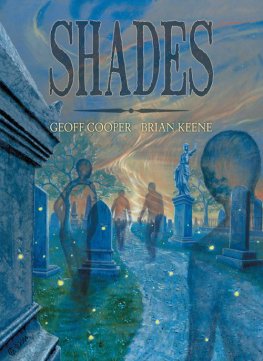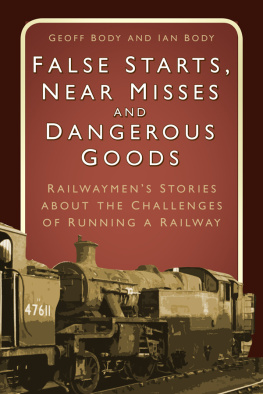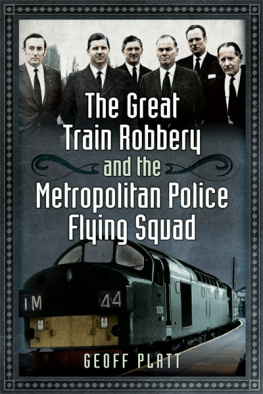Body Geoff - The Galloping Sausage and Other Train Curiosities
Here you can read online Body Geoff - The Galloping Sausage and Other Train Curiosities full text of the book (entire story) in english for free. Download pdf and epub, get meaning, cover and reviews about this ebook. year: 2016, publisher: The History Press, genre: Non-fiction. Description of the work, (preface) as well as reviews are available. Best literature library LitArk.com created for fans of good reading and offers a wide selection of genres:
Romance novel
Science fiction
Adventure
Detective
Science
History
Home and family
Prose
Art
Politics
Computer
Non-fiction
Religion
Business
Children
Humor
Choose a favorite category and find really read worthwhile books. Enjoy immersion in the world of imagination, feel the emotions of the characters or learn something new for yourself, make an fascinating discovery.
- Book:The Galloping Sausage and Other Train Curiosities
- Author:
- Publisher:The History Press
- Genre:
- Year:2016
- Rating:3 / 5
- Favourites:Add to favourites
- Your mark:
- 60
- 1
- 2
- 3
- 4
- 5
The Galloping Sausage and Other Train Curiosities: summary, description and annotation
We offer to read an annotation, description, summary or preface (depends on what the author of the book "The Galloping Sausage and Other Train Curiosities" wrote himself). If you haven't found the necessary information about the book — write in the comments, we will try to find it.
Body Geoff: author's other books
Who wrote The Galloping Sausage and Other Train Curiosities? Find out the surname, the name of the author of the book and a list of all author's works by series.
The Galloping Sausage and Other Train Curiosities — read online for free the complete book (whole text) full work
Below is the text of the book, divided by pages. System saving the place of the last page read, allows you to conveniently read the book "The Galloping Sausage and Other Train Curiosities" online for free, without having to search again every time where you left off. Put a bookmark, and you can go to the page where you finished reading at any time.
Font size:
Interval:
Bookmark:


Nickels railway. ( Illustrated London News )
AND ACKNOWLEDGMENTS
It is doubtful whether any strand in the technological development of the railways occurred without deviation from what eventually became the norm. Indeed, imagination and experiment are integral parts of any growth process, and the railway business was no exception. The pioneers starting from scratch had neither precedents to constrain them nor guidelines to fetter their imagination. By later standards many of the methods they tried inevitably attained curiosity status as, in a similar way, did some of the mainstream activity practices which were tried in the search for improvement. Such is the nature of change.
Beginning even before the Rainhill Trials, the course of motive power development not only evolved erratically but wandered considerably in the process. Steam power was always going to replace horses but cable haulage, atmospheric systems and even sail railways were all tried in the quest for superior traction, economy and speed. The same has applied to railway equipment and practices so that there have been no shortage of curious and unusual examples appearing along the way. Nor has there been any lack of out-of-the-ordinary people, both crank and genius.
The aim of this book, following in the path of the earlier Railway Oddities, has been to capture a varied but random selection of the curious and the unusual and present the examples in their setting. Hopefully the result might be a readable and possibly astonishing repast of some of the more outstanding of the odd things that have occurred over two centuries of railway history.
The sources consulted have been many and varied, often, like the Regional Railway History Series from David & Charles, just giving a clue to something intriguing and worth researching further. The railways own material, especially the Great Western Railway Magazine , the railways own working instructions and the extensive publicity material, have provided equally rich pickings, as have a whole host of early railway books and documents, local newspapers, libraries and the like.
The authors own material and experiences are extensive, and many good friends and former colleagues have contributed, especially Bill Parker who has also trawled the goodwill of his own many railway contacts. A number of contributions have also come from library research, aided by people like Linda Tree at Kings Lynn and the Great Yarmouth library staff. Thanks are also due to Jim Dorward and Roy Kethro. We are grateful to all who have made an input.
The illustrations are all from the authors collections except where otherwise credited.

Great Western Railway steam railcar.
The year 1845 was a very significant one in Norfolk. On 30 July the Norfolk Railway line from Norwich to Brandon was linked with that of the Eastern Counties Railway (ECR) on through Ely and south through Cambridge to London to give Norwich an important railway link with the capital. This development had already raised concerns in Kings Lynn that it would be left out of the exciting new railway age. There were also real fears that the north Norfolk port would lose some of the extensive and lucrative coal traffic brought in from northern harbours for onward movement within East Anglia. The result was intensive local discussions in Kings Lynn resulting in the promotion and incorporation of three railway schemes of its own. These were the Lynn & Ely Railway to connect with the new line to London at Ely, the Lynn & Dereham to provide a route to Norwich and Yarmouth and the Ely & Huntingdon, a truncated version of the original scheme to reach Bedford. All three were amalgamated into the East Anglian Railway (EAR) in 1847.

Brandon in 1845 was a small and remote place, but important in railway terms as the last link in the creation of the first route from London to Norwich. ( Illustrated London News )
Work on the East Anglian groups lines was started in 1846 and by the following October the main line had reached Ely and much progress had been made on the other routes as well. Their construction involved little in the way of severe curves or gradients but the company incurred high costs in spanning the waterways of the Fenland sections. Already it was being eyed acquisitively by the growing Eastern Counties Railway as part of an emerging pattern among early railways in which small concerns sought to be acquired at inflated prices and large ones aimed to buy up rivals financially exhausted by construction costs.
This was a period in which the unscrupulous George Hudson was directing the affairs of the Eastern Counties Railway. In negotiations with the East Anglian Railway over a possible lease, he insisted on completion of the latters Huntingdon and Wisbech lines, knowing full well that they would sap the smaller concern of funds and make it more amenable to acquisition. It certainly did the former and by 1849 the East Anglian Railway was in financial difficulties. It had to sell off land, close stations and reduce its staff levels. A measure of the problem was the decision to provide beds at stations for the use of porters in order to save the cost of night watchmen!
The Eastern Counties Railway had been working the truncated Ely & Huntingdon line between the latter point and St Ives but in 1849 gave notice that it would not continue, leaving the EAR with the problem of how to access this isolated outpost of its network. It did manage to scrape together a few wagons and a tram carriage and find a horse to pull them but then fell foul of the railway commissioners because the horse-drawn trains could not achieve the 12mph required by legislation. In the following year, when the EAR tried to link up with the Great Northern (GNR) at Huntingdon, the contractor for constructing the connecting line insisted on having twenty coaches locked up in a shed as security for his account such was the Kings Lynn companys parlous financial state.
On 29 June 1850 matters reached their lowest point when possession of the East Anglian Railway was taken by the Official Receiver. Soon various anxious creditors were claiming as security not only the East Anglians engines but also anything else they could put their hands on. Many locomotives operated with a creditors representative on the footplate while other assets carried a plate with details of the lien claimant.
Underlying all these events lay the tactics of the EARs two large neighbours. The Great Northern Railway was anxious to branch out from its new route to the north from Kings Cross and penetrate East Anglia. The Eastern Counties was equally intent on thwarting any such intrusion into what it saw as its territory. It had already offered the East Anglia 25 s a day to lease its Huntingdon extremity and now made another derisory offer for the whole undertaking.
Getting to hear of this situation, the local agent for the Great Northern Railway, a Mr Baxter, agreed a more reasonable deal with the East Anglian but his superiors began to have second thoughts when the company tried to run through-trains from Peterborough to Kings Lynn. They found that the ECR had blocked the connection between the two systems and horse buses had to be used to bridge the gap.
Next pageFont size:
Interval:
Bookmark:
Similar books «The Galloping Sausage and Other Train Curiosities»
Look at similar books to The Galloping Sausage and Other Train Curiosities. We have selected literature similar in name and meaning in the hope of providing readers with more options to find new, interesting, not yet read works.
Discussion, reviews of the book The Galloping Sausage and Other Train Curiosities and just readers' own opinions. Leave your comments, write what you think about the work, its meaning or the main characters. Specify what exactly you liked and what you didn't like, and why you think so.

